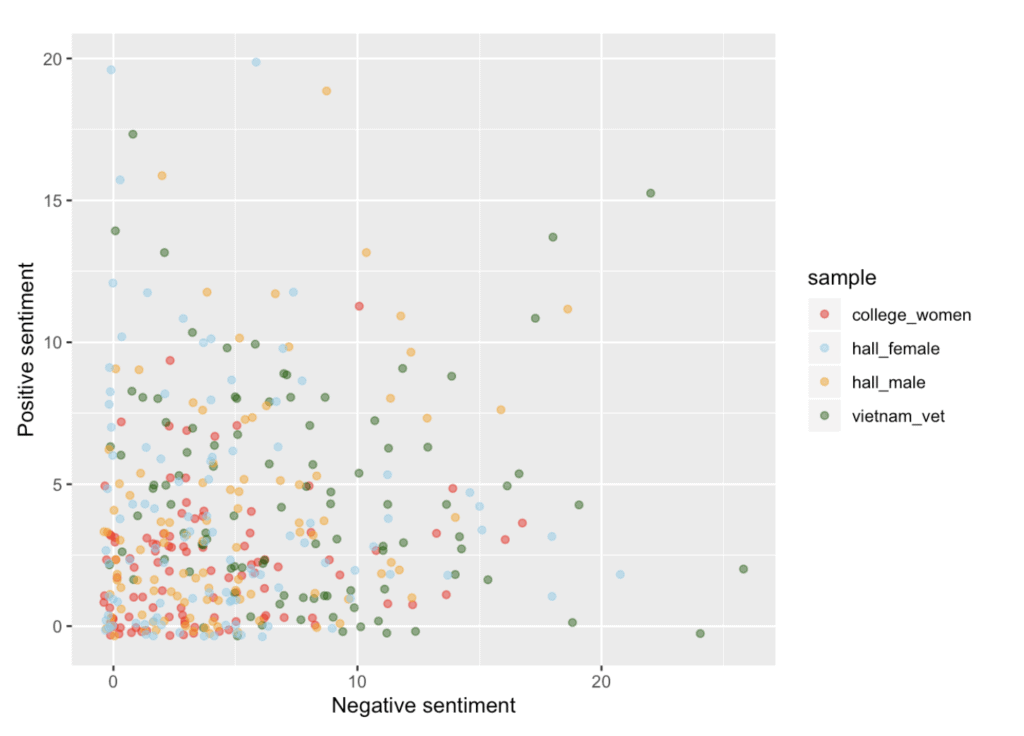When you hear the words sentiment analysis (and you can hardly avoid them these days), your thoughts no doubt turn to product and brand feedback and customer service – and for good reason.
Sentiment Analysis is an extremely valuable tool for marketers looking to get ahead of the curve, however, there’s a lot more to it than straight-up feedback. In this article, we’ll take a look at some of the weird and wonderful ways in which forward-thinking companies are using sentiment analysis to take their businesses to the next level.
Living the dream
Our dreams can range from the mundane to the bizarre and even x-rated – and we just love to talk about them; in real life and on social media. For most of us, this is interesting but, essentially, without any particular use but, not so for a bunch of university researchers in 2013.
As part of a larger research project on sleep, the researchers gathered 50,000 dream transcriptions and summaries and ran them through a sentiment analysis tool in order to gather insights on products.
The thinking behind the experiment was that our subconscious ‘never lies’, therefore, the project would provide valuable – and, more importantly, honest, feedback on how people feel about a certain product. While this may seem a little ‘pie in the sky’, it’s a good example of people thinking outside the box when using sentiment analysis.
For most brands, these tools are used in a very pedestrian way and, examples like this one can provide inspiration when it comes to thinking outside the box (or even the waking world) when gathering insights.
Real time, real results
We tend to think about the use of sentiment analysis in an ‘after the fact’ kind of way, but that doesn’t necessarily have to be the case. There’s absolutely no reason that sentiment analysis can’t be used in real time – as was demonstrated recently by US Airlines.
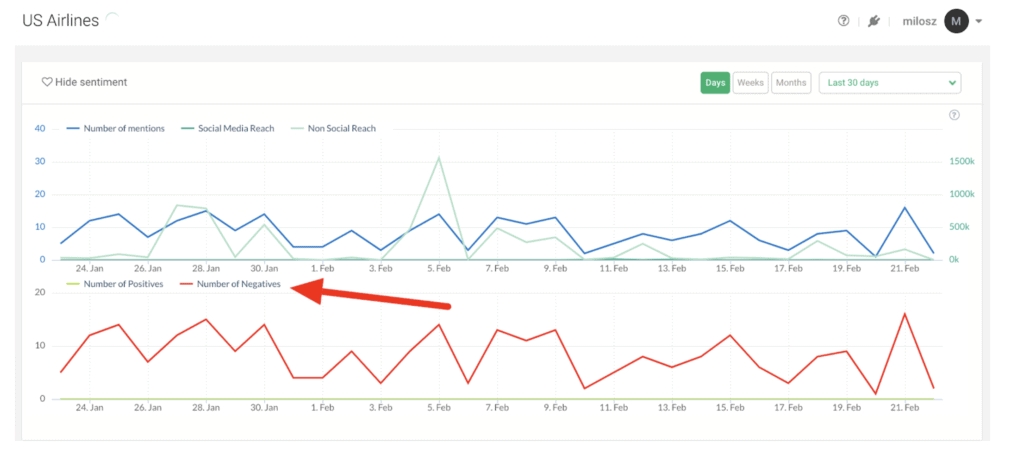
Like a huge amount of brands around the world, US Airlines began using sentiment analysis in order to gather information about how its customers felt about its service; for example, delays, comfort, food quality and more. While this was no doubt valuable, the airline decided that its sentiment analysis tool could work harder and, it hit on the idea of monitoring comments on Twitter and feeding them, in real time, through to its customer service platform.
This allowed support staff to pick up on issues and endeavour to resolve them as quickly as possible. This was used to great effect when a customer tweeted about a lost luggage problem while waiting for a connecting flight. The support staff were able to access the comment and have the problem solved before the passenger landed at his final destination. Needless to say, this kind of proactive service resulted in some extremely positive tweets by the customer.
As a software development solution provider, you can safely say that 2020 was something of a rollercoaster. I absolutely believe that the only reason that my business survived was that I was able to get a handle on what people were thinking in terms of the software development market. I regularly use sentiment analysis in real time in order to take the temperature of the public and find out what their concerns are regarding the software market – I’m then able to address those concerns in my content. This is also essential in my work on development phase services for my clients.
Max Babych, CEO & Founder, SPD Load
Busting the bias
Most of us are in the habit of reading things online, whether it’s a blog post, an article or an industry-based thought leadership piece.
Despite this, few of us give a second thought to the fact that the ‘facts’ within the piece may be subject to the author’s bias, either in a positive or a negative way. With fake news and misinformation rife on the internet, wouldn’t it be great if you could get an idea of bias when reading an article? Well, you can actually do just that.
During the Viafora Big Data hackathon, the winning team created an open-source Chrome plugin which detects author bias in online articles. This is as simple as it is effective – when reading a piece, simply click the plugin and you’ll be treated to a side menu list of articles by the same author, sorted into sentiment scores.
In plain terms, this means that, if you’re reading an article by Jane Doe about an SEO tool, you’ll be able to clearly see if Jane presents a consistent like or dislike for the tool through her previous work.
“We live in a fast-paced world. We consume more information than ever before and with the little time we have, we often take shortcuts when it comes to validating the ‘facts’ we take in. Whether you’re reading an article on marketing strategies, a political piece, or a product comparison piece – it’s critical to take a few moments to research the validity. Anyone can claim to be an expert and get away with it nowadays.” – Datis Mohsenipour, Director of Marketing, HeyOrca
Political Predictions
Elections tend to be nail-biting marathons which seem to go on for years, however, thanks to sentiment analysis, a lot of candidates have a pretty good idea of the outcome of an election before a single vote has landed in a ballot box.
Councils, governments and other political entities, regularly use sentiment analysis in order to forecast the result of an election. Twitter, in particular, has been found to be incredibly accurate as, often, short sweet tweets will accurately reflect voter preferences and, correspond very closely to political programs, media coverage and candidate profiles.
The surprisingly effective results gleaned from Twitter during election campaigns has allowed political parties to tweak their campaigns and to prepare for crisis management plans in the event that the forecasting predicts a loss.
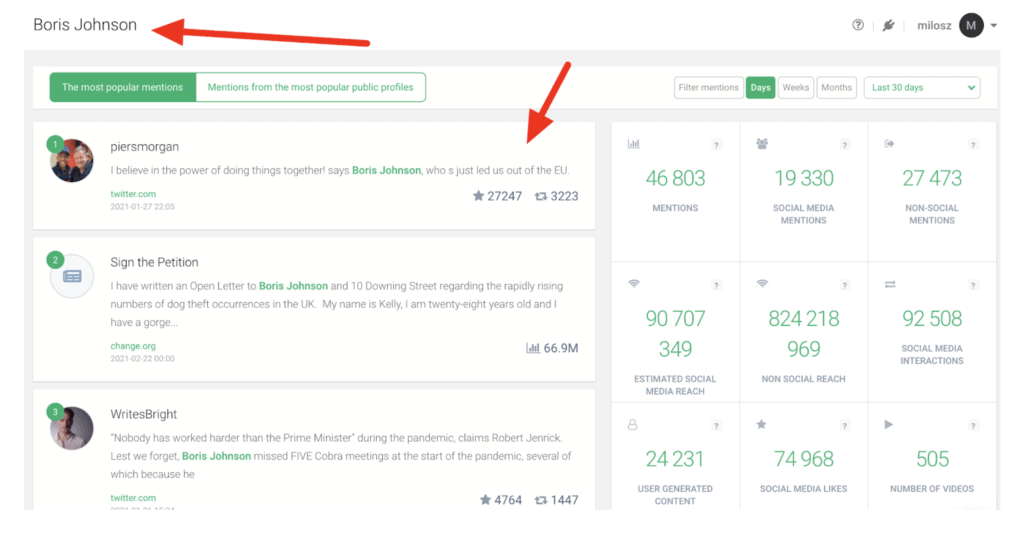
While this can be extremely useful, politicians should beware of sentiment analysis being used against them – in 2019, UK Prime Minister, Boris Johnson, claimed that a large majority of the British people were behind him, however, a simple sentiment analysis run-through proved very much otherwise.

Similarly, an analysis of tweets about primary candidates during the second to last US election, clearly showed negative emotion toward Donald Trump – although, surprisingly, he went on to win that election.
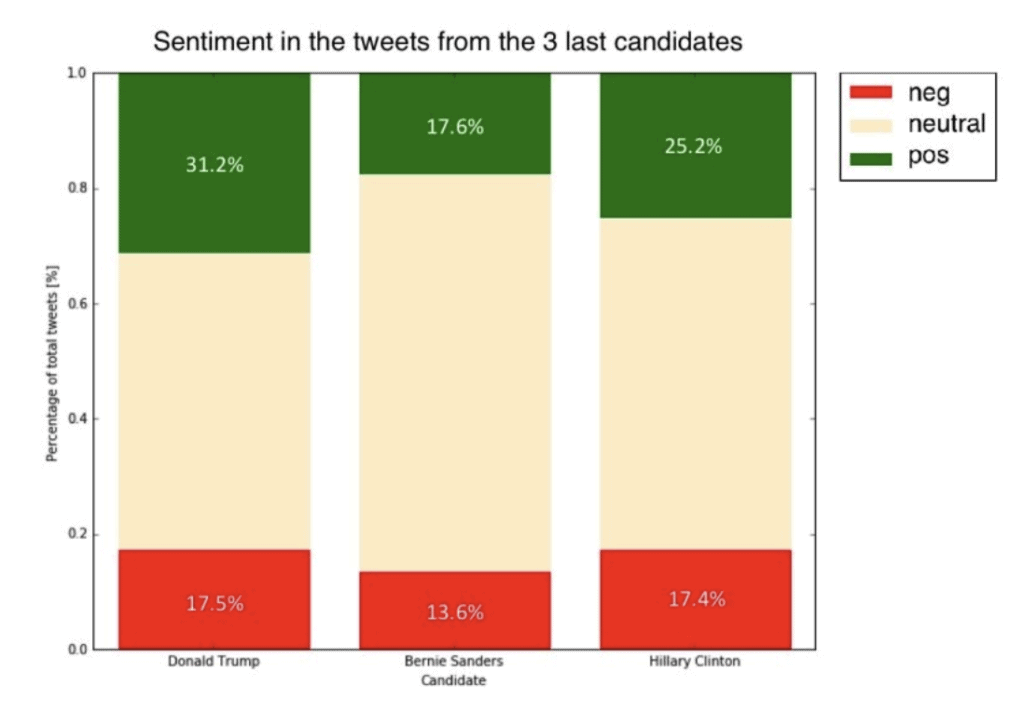
Stock Trading

Shortly after the message was posted online, the price of Snap, Snapchat parent company, fell by 8.5 percent. Some investors were able to benefit from the social media turmoil, The Big Short-style, and made $163 million.
For most of us, the term ‘stock trading’ conjures up images of The Wolf Of Wall Street and lots of super complicated activities which require masses of experience, not to mention finance knowledge. In 2021, things are looking a little different – which means that the world of trading is opening up to Joe Public.
Gone are the days when getting on board with stocks and investments meant hiring a consultant with a slick attitude and fees to match. Sentiment analysis tools can be used to predict the performance of a particular stock based not just on historical data but on opinions of industry experts.
Sentiment analysis tools scour the internet in order to pick up comments from movers and shakers within the trading sector and to compare those comments. The tool then hands over a pretty darn accurate forecast based on these factors along with the crunching of historical data.
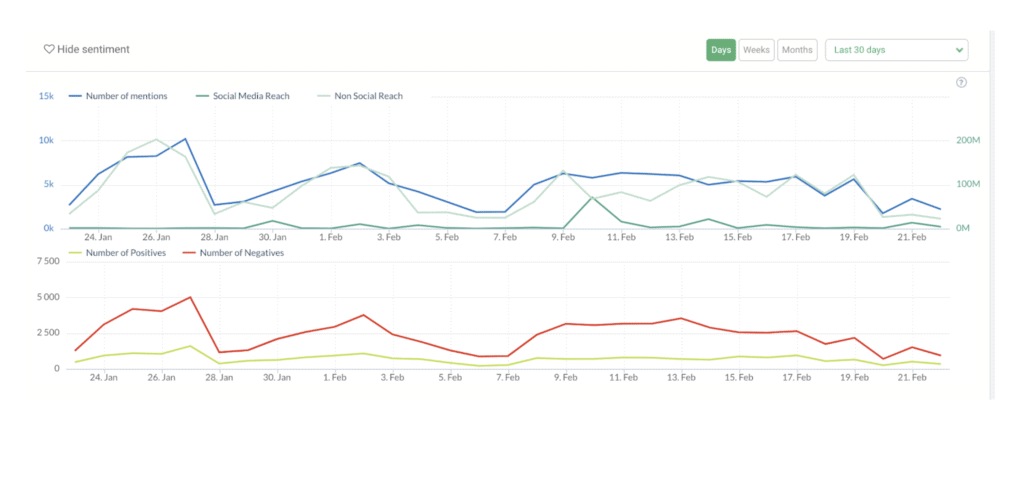
While you may not end up with the kind of wealth that Jordan Belfort enjoyed (and hopefully won’t end up behind bars like he did), this can be really useful for those looking to dip a toe into the waters of stock market trading.
Market Intelligence Monitoring
In the modern world, business markets are affected by a wide number of factors including exchanges between organisations, stakeholders, regulatory bodies and even governments.
These exchanges of information come together to provide the ebb and flow of markets around the world and can have a significant impact on prices, employment and much more.
Last year, sentiment analysis became a major tool for monitoring market intelligence and to stay updated in terms of trends, tenders and standards. Common thinking is that, as we head into the summer of 2021, this will become hugely important for talent acquisition, visualisation of data and process automation.
Experts believe that this will be an essential resource in a world which has seen so much change and upheaval during an incredibly short time.
In such a fast changing environment, businesses need to take advantage of every tool at their disposal in order to see how the land lies and to make reasonable forecasts for the future. Without sentiment analysis, this is close to impossible.
Jack Zmudzinski, a senior associate at future-processing.com
As technology marches relentlessly forward, so too does sentiment analysis. New innovations are cropping up on an almost daily basis, allowing for deeper insights and easier accessibility. Some of these innovations are:
Sentiment Neuron
For the most part, sentiment analysis as we know it relies on labelled training data in order to be able to function successfully. This, of course, involves the human handling of the data in terms of collating, sorting, loading and cleaning; all of which, of course, takes time and manpower.
Sentiment neurons work on the basis of, essentially, unsupervised learning algorithms. An experiment using Amazon reviews conducted by OpenAI revealed that it was possible for a machine learning system to predict the next character in Amazon text reviews. It does this by learning an interpretable feature in order to discover the sentiment behind an overall piece of text.
A few short years ago, this kind of unsupervised learning was no more than a pipe dream but it seems that this is now not only a reality but is hugely effective in improving performance and significantly cutting down the time needed for set up.
A spokesperson for OpenAi said, “We believe the phenomenon is not specific to our model, but is instead a general property of certain large neural networks that are trained to predict the next step or dimension in their inputs.
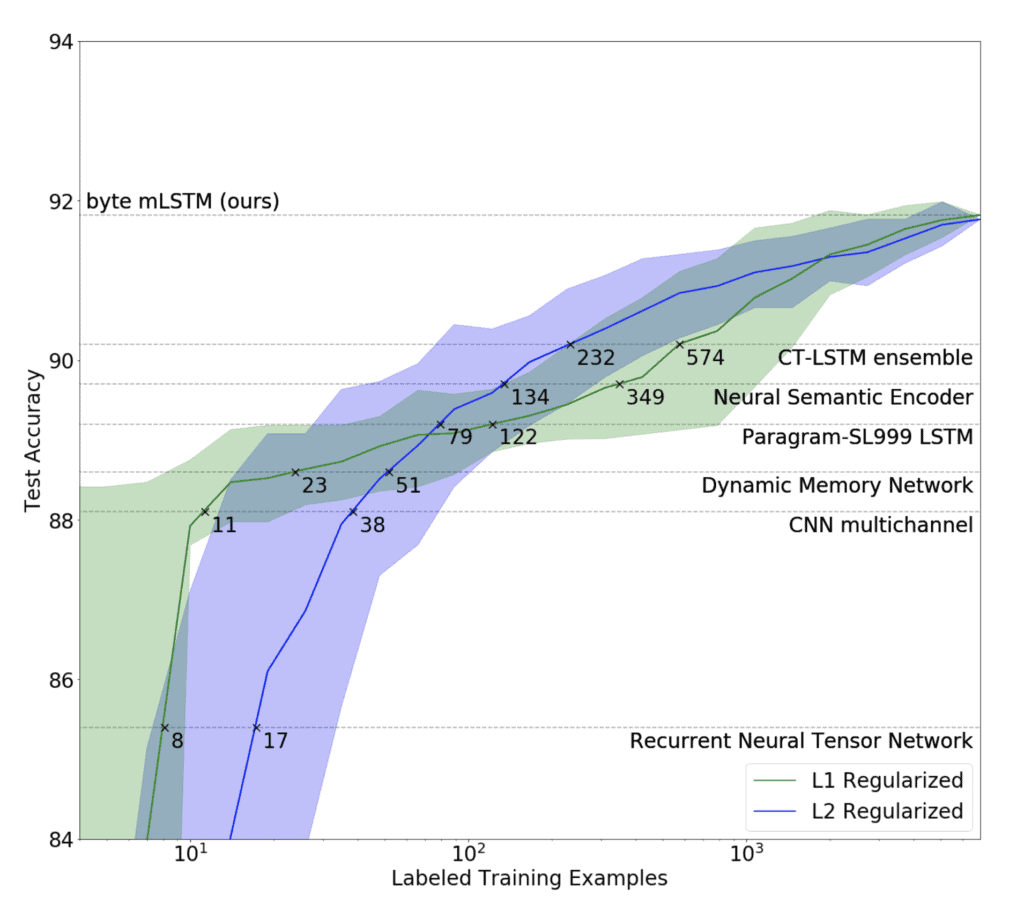
Our results are a promising step towards general unsupervised representation learning,” OpenAI’s researchers explained. “We found the results by exploring whether we could learn good quality representations as a side effect of language modeling, and scaled up an existing model on a carefully-chosen dataset. Yet the underlying phenomena remain more mysterious than clear.”
Conclusion
While we may not be able to precisely predict the future of sentiment analysis, what we can do is to examine the facts. In the past few years, artificial intelligence and machine learning have advanced at a speed that many of us would have thought possible.
It’s therefore reasonable to believe that, as this technology continues to advance, so too will sentiment analysis and, ultimately, what we’ll be able to do with it. As we’ve seen in this article, it’s my belief that real time sentiment analysis will become much more prevalent and, as with US Airlines, will be linked to customer support and marketing departments to create a network which will transcend the kind of ways we currently use these tools.
They say that knowledge is power and, this is certainly the case with sentiment analysis. Having the tools to find out – in a very precise way – how people feel about a topic allows businesses to take decisive action and to build solid relationships – and that is absolutely the way forward.
 Published in: February 2021
Published in: February 2021
Last Updated in 2022-12-28T11:57:16+00:00 by Lukasz Zelezny

